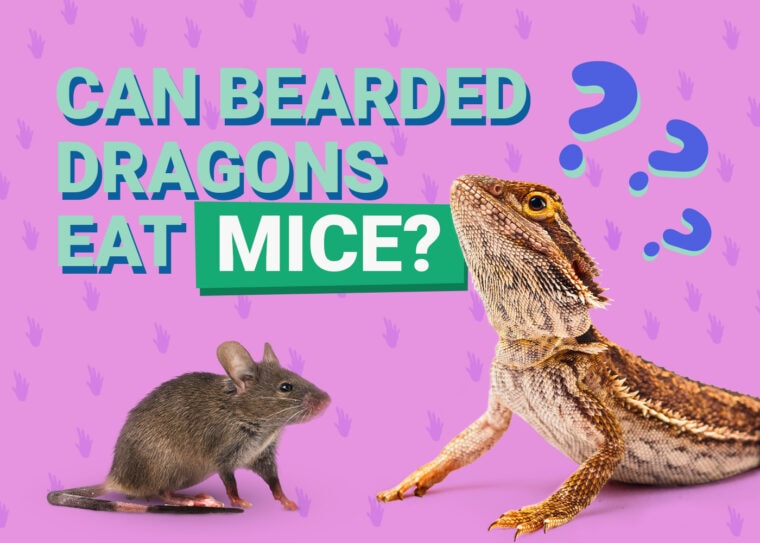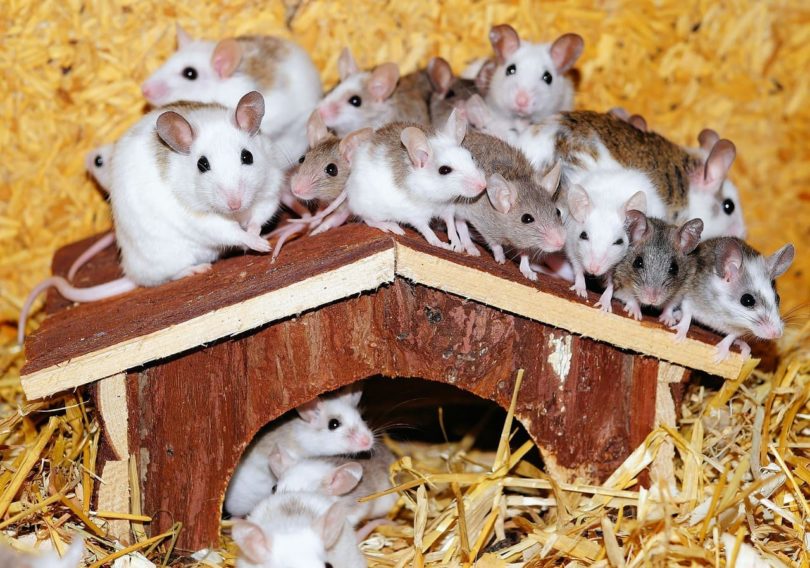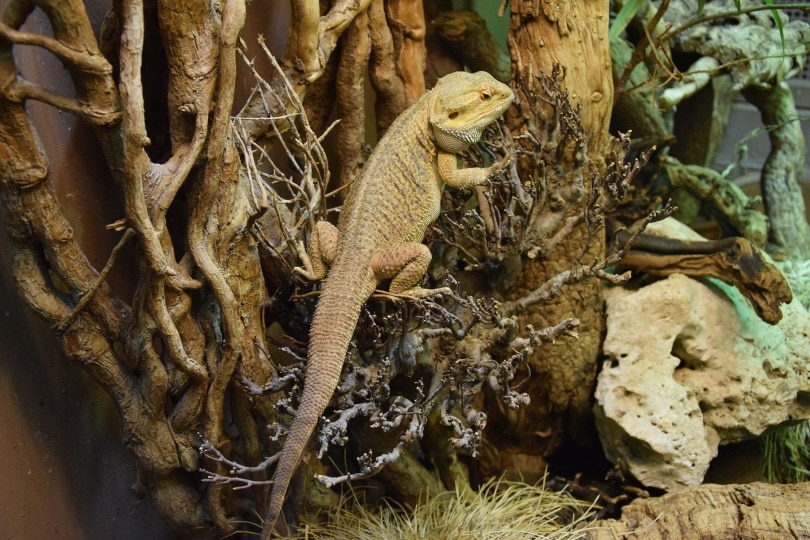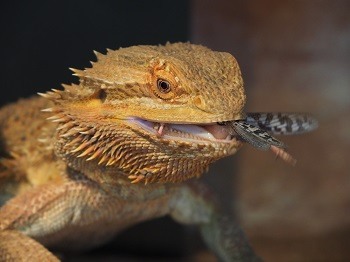
In the wild, the bearded dragon is an omnivore. This means that they can and do eat any type of food. Their diet usually consists of plants and shrubs, grass, seeds, and insects. If they were to come across baby animals and small animals, they would pounce at the opportunity to eat it, if they can overpower the animal.
So, the answer is yes, bearded dragons can eat mice—with several caveats— but the bigger question is should they?
You will find a lot of conflicting information on the Internet regarding whether mice are a healthy food source for bearded dragons. And mice are a common food for snakes and other lizards, so it is understandable that as a beardie owner you want to know whether it is safe to feed these young animals to your scaled friend.
High Fat and Protein Content

Mice are high in protein, fat, and calcium. Baby mice, known as pinkies because of their skin which is visible with no fur on, are especially high in protein. This level does drop off as the mouse ages, but it remains high even when it is a juvenile mouse, called a fuzzy. In contrast, the fat level continues to rise during this period.
The high-fat content means that a healthy bearded dragon, with a healthy and balanced diet, should avoid eating mice. The bearded dragon is prone to obesity, and if he has a good diet that consists of feeder insects and green vegetables, he will be getting adequate levels of fat in his diet already.
If you do want to feed pinkies to your beardie, you should plan accordingly. Ensure that he is not getting too much fat from other sources, and monitor the protein and calcium found in this treat. By doing so, you can provide a little extra variety in your beardie’s diet while offering something that he is likely to enjoy.
Impaction
There is a risk of impaction. Impaction occurs when the digestive tract is blocked by a semi-solid mass. It can prevent mobility in the lizard, to the extent that one or both back legs can appear paralyzed. Left unchecked and untreated, impaction can lead to death in bearded dragons. Pinkies aged between one and three days old do not have fully formed skeletons, which minimizes the risk of impaction for your beardie.
When considering all of the potential problems associated with feeding mice to beardies, it is worth remembering that the younger the pinkie the better, and you should think twice before feeding any older than three days.
The Problem With Adult Mice
Another issue with adult mice is that they are coated in fur and beardies are known for having gastrointestinal issues that would make it difficult to swallow and digest them. As such, adult mice should not be fed to any bearded dragon.

Health Benefits of Mice for Beardies
There are some benefits to feeding pinkies to beardies. For a start, it does offer some variety in the food that you feed, rather than keep feeding the same feeder insect and vegetable diet. If you keep feeding the same food time and time again, some animals can go off it.
Pregnant beardies need to consume more fat than males and females that are not pregnant. Pinkies can be a good source of some additional fat. Similarly, if you have a beardie that is suffering malnutrition, possibly because it is refusing to eat enough insects, a pinkie could be a good way to get some fat down them.
How Many Pinkies Can a Bearded Dragon Eat?
It is common to buy packets of frozen pinkies. Choose the size and age that suits your requirements, and ensure that you keep the mice frozen until required. You can feed one every few weeks, or once a month, relatively safely, as long as you monitor fat and other nutrient levels.
How to Feed Mice to Bearded Dragons
When it is time to feed a pinkie, you will need to defrost and warm the mouse up a little. It will need to be between 86°F and 95°F because food that is too cold or too warm can negatively impact a bearded dragon’s digestive system.
You should avoid warming it up in the microwave. If you leave it even a second too long, it can cause a real mess. Microwaving can also cause the bacteria to start growing and it will reduce some of the nutritional value of the mouse.
Instead, warm the pinkie up in a bucket or bowl of lukewarm water for 15 to 20 minutes. This should bring the mouse to a suitable temperature. It should not be cold to the touch and should be soft to touch.
You may need to entice the beardie by getting its attention with the mouse. Use a pair of tongs, grab the mouse and dangle it in front of the beardie to catch his attention. There’s no need to chop the mouse up because your beardie can easily eat a whole pinkie.

Final Thoughts
Bearded dragons are omnivores, which means that, in the wild, they would eat anything that presents itself. As well as insects and vegetation, this would occasionally include small and baby animals.
Although there is some debate over whether to feed mice to beardies or not, it is okay to feed pinkies aged up to three days old, warmed in lukewarm water, and as long as you keep track of the fat levels and nutrition levels in your beardie’s diet. If you have a pregnant bearded dragon or one that is suffering from malnutrition, the fat content of the pinkie makes it a beneficial addition to their diet.
Featured Image Credit: CC0 Public Domain, pxfuel








